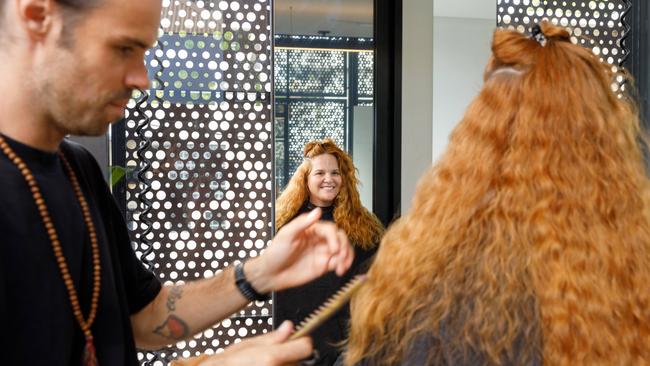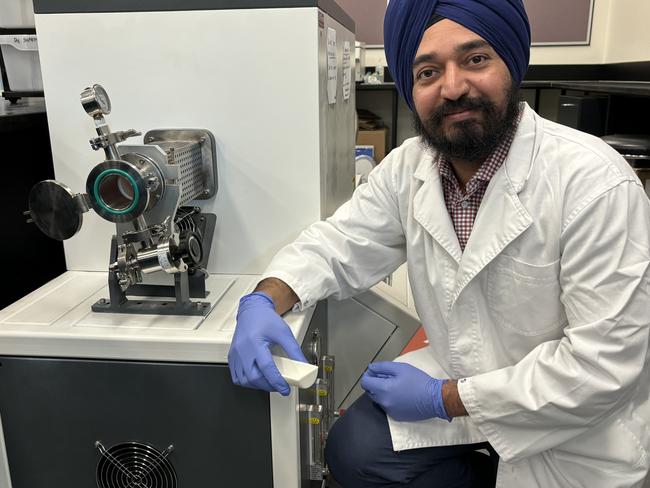Revealed: How human hair could run our cars
It sounds like something from science fiction, but an Aussie researcher has found a way to turn human hair into a native element.

Environment
Don't miss out on the headlines from Environment. Followed categories will be added to My News.
Hair is nature’s coolest but weirdest accessory, an evolutionary holdover with a purpose that seems purely aesthetic.
But human hair could also power the batteries of the future, thanks to a revolutionary breakthrough from researchers at Charles Sturt University.
Using conductors that create intense heat in ultra-short bursts, Dr Amandeep Singh Pannu and his team have developed a process for turning human hair clippings into graphite.
They then used the graphite they produced to power lithium-ion batteries, the devices that run seemingly everything these days from smartphones to electric vehicles. Call it hair power.

With more than three quarters of global graphite stocks coming from China, the idea that the mineral could instead be sourced abundantly and easily from the floor of the barber shop or hairdressing salon has the potential to up-end the worldwide supply chain, if the team’s method can be replicated at an industrial scale.
Dr Singh is confident it will be.
“(Graphite) costs around $3000-$4000 per ton. We are thinking we can convert the material for $300 Australian per ton. This is achievable because it is not a labour intensive process,” he said.

Traditional methods for the refining of mined graphite also require the use of highly-polluting hydrofluoric acid, Dr Singh said, whereas converting human hair into graphite was “an incredibly clean source right through the entire process, with very minimal pollutants or negative outputs.”
The Punjab-born scientist has been working in Australia since 2017 and developing the process for transforming tresses into graphite for the past three years.

It takes about a kilogram of clippings to produce around 500 to 600 grams of graphite, Dr Singh said, but the colour and style is irrelevant. Blond, brunette, curly, straight: the graphite they produce is the same. Even pet hair can be used.
The clippings were supplied to the researchers by Sustainable Salons, an organisation advising the hairdressing industry about environmentally friendly practices.
“We envision a future where hair transcends its conventional status as waste and emerges as a sustainable resource of immense potential,” Sustainable Salons co-founder Paul Frasca said.
“What sets hair apart is that it is an infinite resource – hair is constantly growing. The prospect of harnessing hair to power our electric vehicles demonstrates that a sustainable future is limitless when we embrace the circular economy,” he said.





